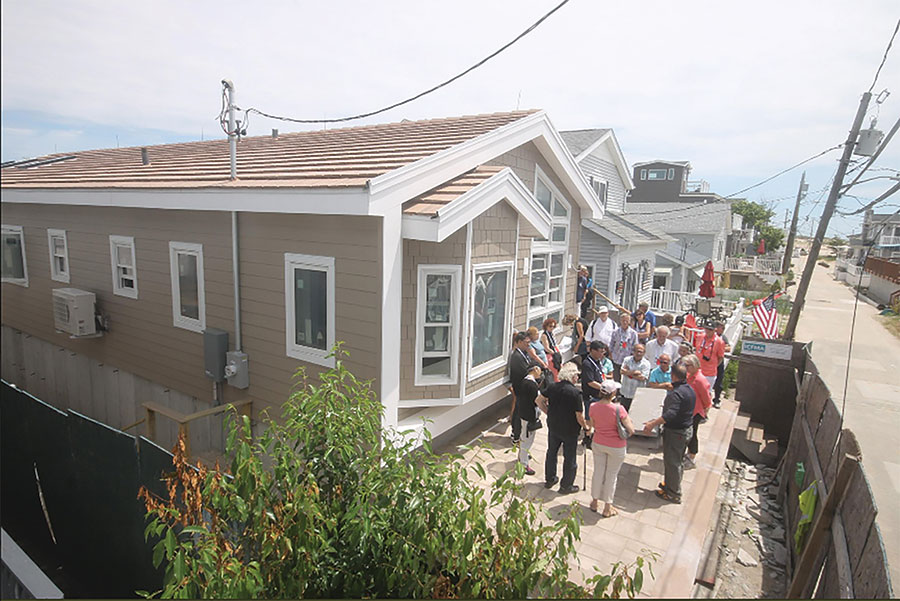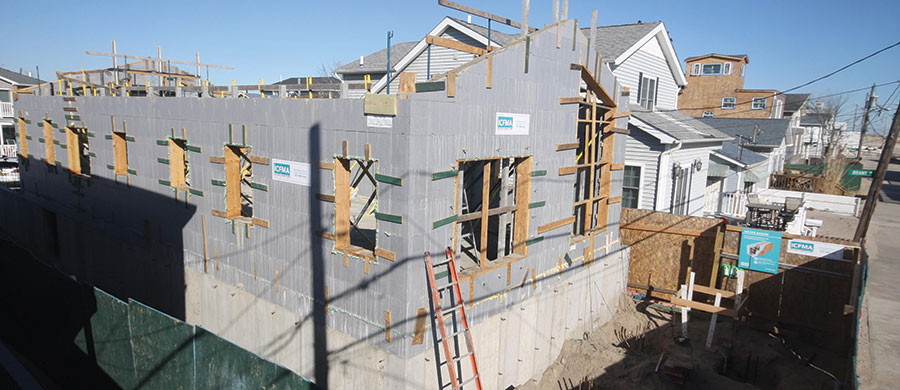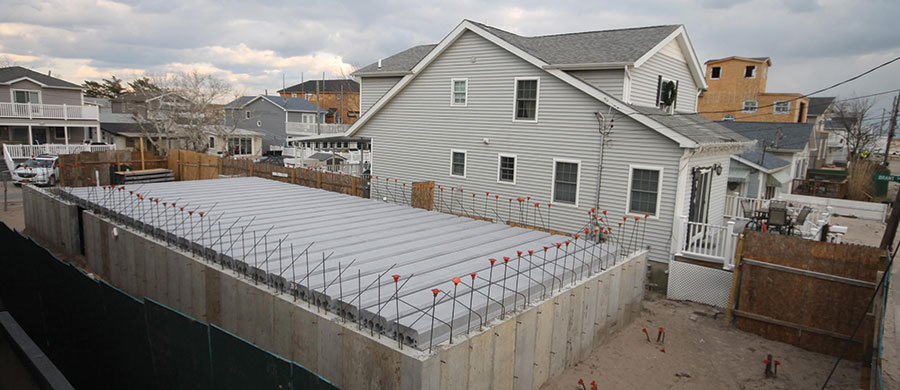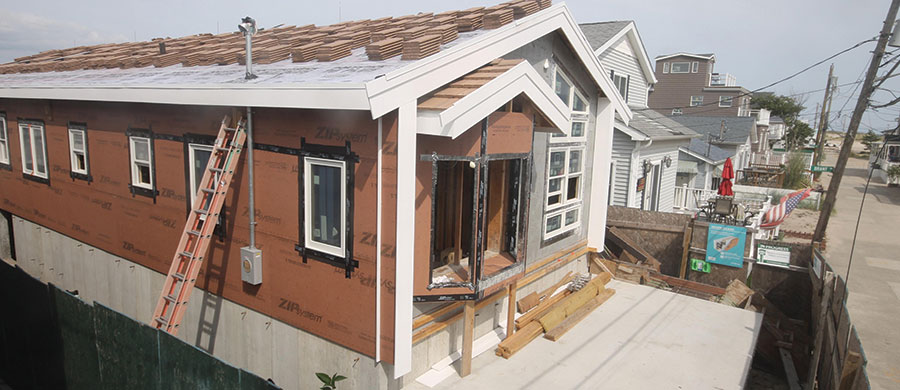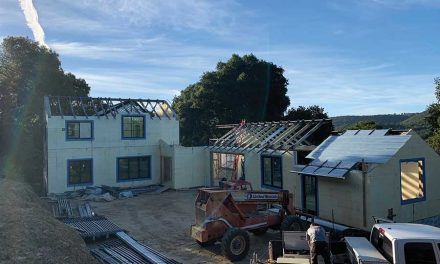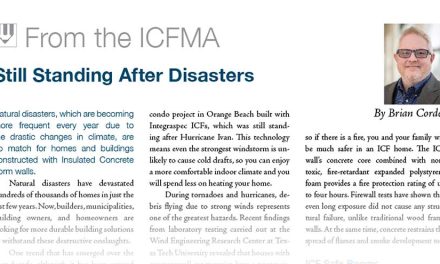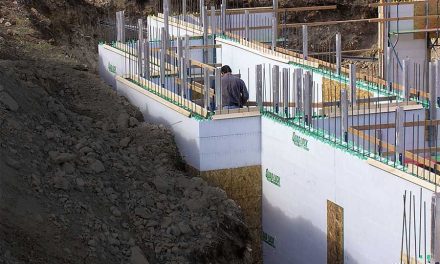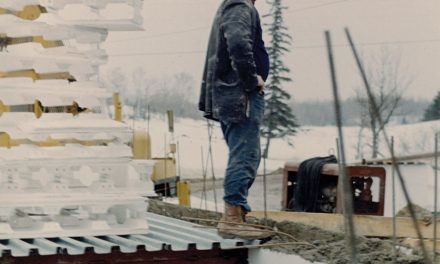When Superstorm Sandy hit New York City in 2012, it brought “the city that never sleeps” to a standstill.
Michael Bloomberg, mayor at the time, called the storm “maybe the worst we’ve ever experienced.” Among the hardest-hit areas was Breezy Point, a tight-knit community located on a low-lying peninsula at the mouth of New York Harbor. In addition to fierce winds and pounding rain, an electrical fire broke out at the height of the storm and burned 130 homes to the ground. In total, the storm destroyed more than 650,000 houses and killed more than 150.
To demonstrate affordable, storm-resistant homes can be built to withstand hurricanes and wildfires, a coalition of industry partners built an ICF home in Breezy Point for Diane Hellriegel, a lifelong resident whose home was destroyed by Sandy.
Dubbed the #HurricaneStrongHome, this project has educated various architects, designers, builders and students on the disaster-resistant attributes of concrete and insulated concrete forms (ICF).
The effort is being led by the Federal Alliance for Safe Homes (Flash), a non-profit organization dedicated to strengthening homes and safeguarding families from natural and manmade disasters. Other partners include the Portland Cement Association (PCA) and BASF. These three partners recently published the Resilient Design Guide: Concrete Construction Edition, and this project literally builds on those recommendations.
The goal of the project was to demonstrate best practices for code-compliant coastal construction using a variety of strong, innovative, resilient and super energy-efficient materials.
Leslie Chapman-Henderson, president and CEO of Flash, states, “Our mission is to create disaster-resilient homes, but that’s an aspiration that can only be accomplished with the support of our industry partners. Bringing our partners together to rebuild this home will help one family—and teach thousands more—the many available options for durable, disaster-resilient construction.”
Site work began in August of 2016, when crews demolished the remains of Hellreigel’s 1955 home. Foundation walls were cast using removable forms to elevate the home above the flood plain and protect it from storm surge.
The living area sits on an insulated, elevated slab formed with Insul-Deck. Usually only available in white EPS, the Insul-Deck for this project was custom molded using BASF’s gray Neopor. By using an engineered T-beam design, the 1,375-sq.-ft. foundation used 19 yards of concrete rather than 37, which reduced the weight of the slab from 150,000 pounds to a more manageable 75,600 lbs.
ICF work began in January and by March, the walls were stacked and poured to the top of the gable. (A video of the ICF install is available at www.icfmag.com.)Walls were built with Logix’s Platinum Series Insulated Concrete Forms, which use Neopor technology to increase insulation values.
Jamie Farny, PCA’s director of building marketing, says the project emphasizes “off-the-shelf” technology, with each material placed where it can provide the optimum benefit. For example, the concrete-and-foam wall and floor systems provide both durability and energy efficiency.
The roof is traditional wood trusses, enhanced with spray foam insulation for additional R-Value and wind resistance. Concrete roof tiles (installed August 2017) and fiber-cement siding (installed March 2018) provide a durable, low-maintenance exterior.
While Hellriegel has not yet moved into the home, it has already helped thousands learn about using ICFs for disaster resistant construction. Joel May, director of resilient construction and disaster durable solutions at BASF says, “Natural disasters such as Sandy sent a reminder to the green design community that while ecological motivation is important, it won’t matter if a building becomes uninhabitable due to flooding, earthquake or power outages.”
As a featured presenter at AIA New York’s Design for Risk and Reconstruction Committee, May has given presentations about Breezy Point in dozens of venues, and hosted tours of the home for architects and students. “This is a huge win for getting resilient construction into the mainstream,” he says. At every presentation and interview, his message is the same: “Resilience is the new green. Sustainable literally means ‘able to endure’ and if so-called green products and buildings don’t stand up to the test of time, then they are not truly sustainable.”
While building with disaster resistant materials adds some cost, it can also create savings. Breezy Point, for instance, is expected to save significantly on energy bills, and is already generating massive insurance savings. May reports the flood risk premium for the #HurricaneStrongHome was reduced from $5,075 annually to $675, a savings of 87%. That’s $88,000 in savings over the next 20 years.
Farny concludes, “Based on the findings of the 2010 U.S. Census, more than half our population now resides in coastal counties which may be at risk for flooding and high winds. There are tangible benefits to making homes in these areas more disaster resistant.”

